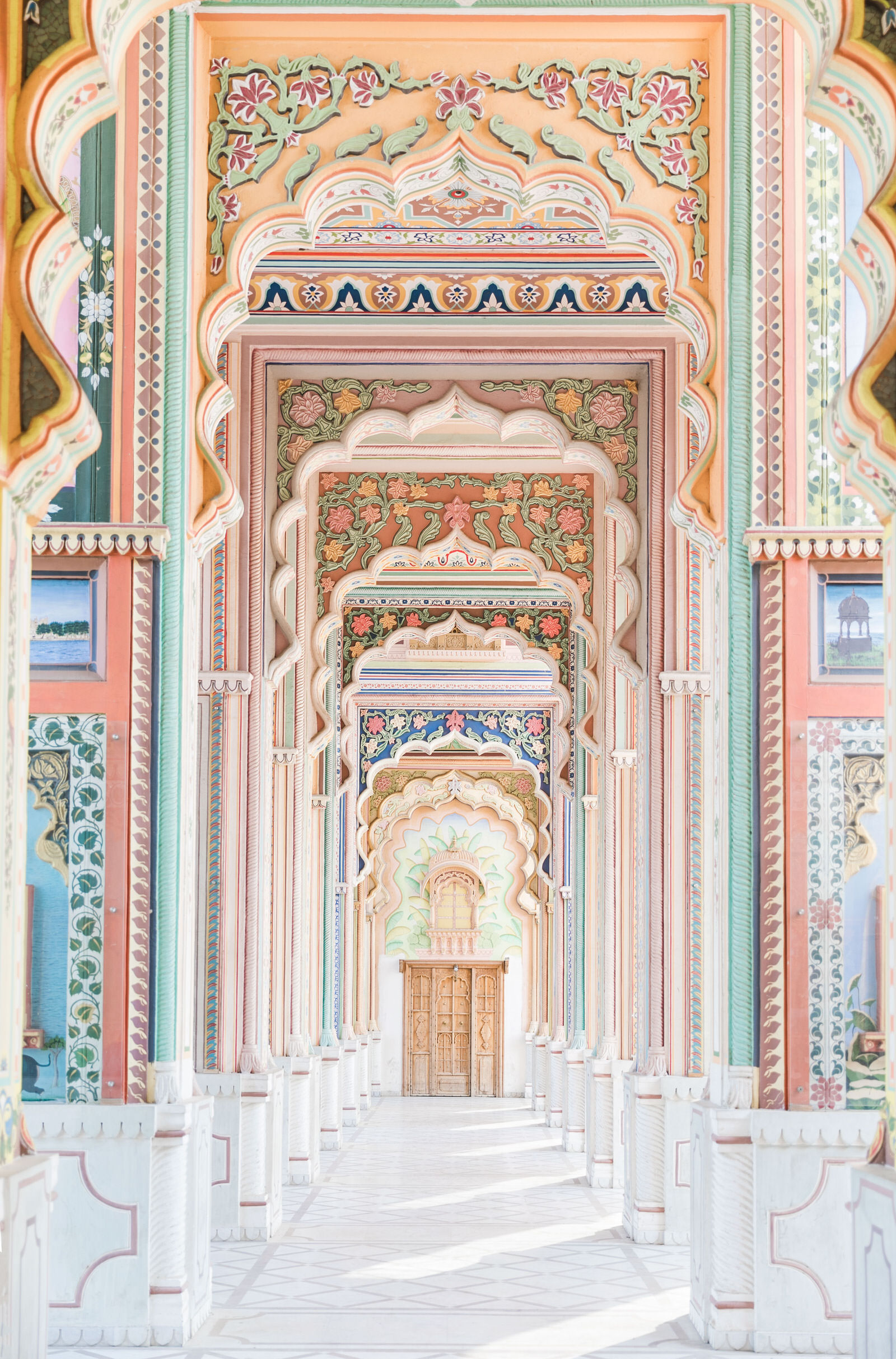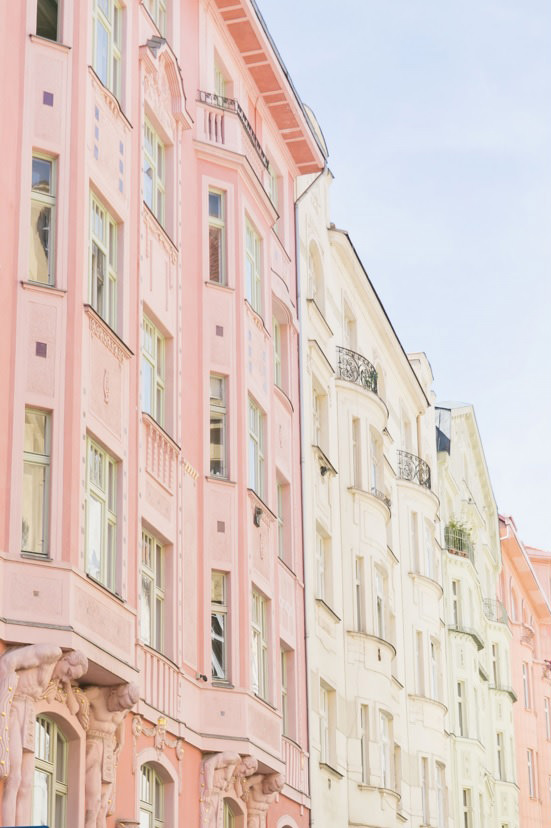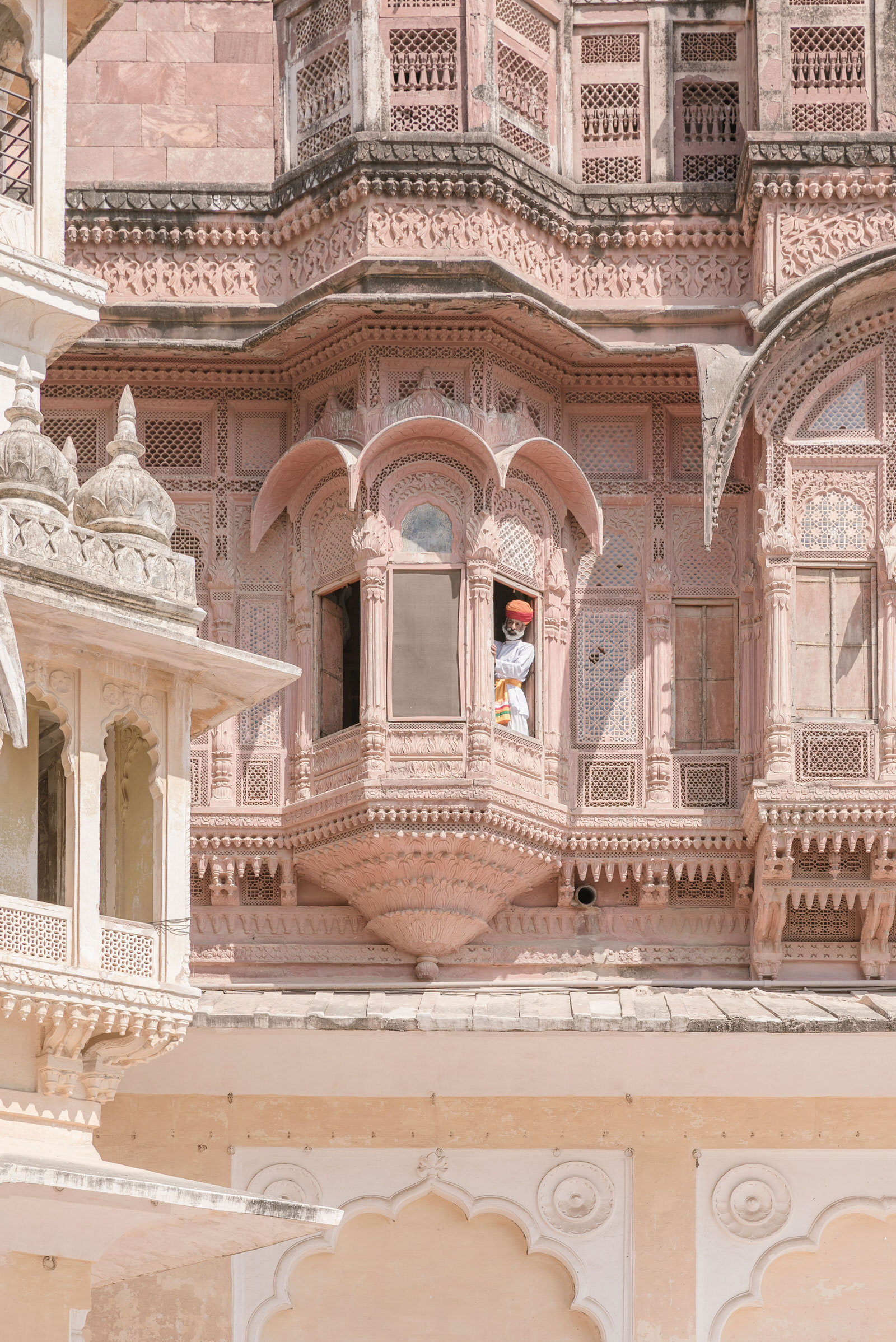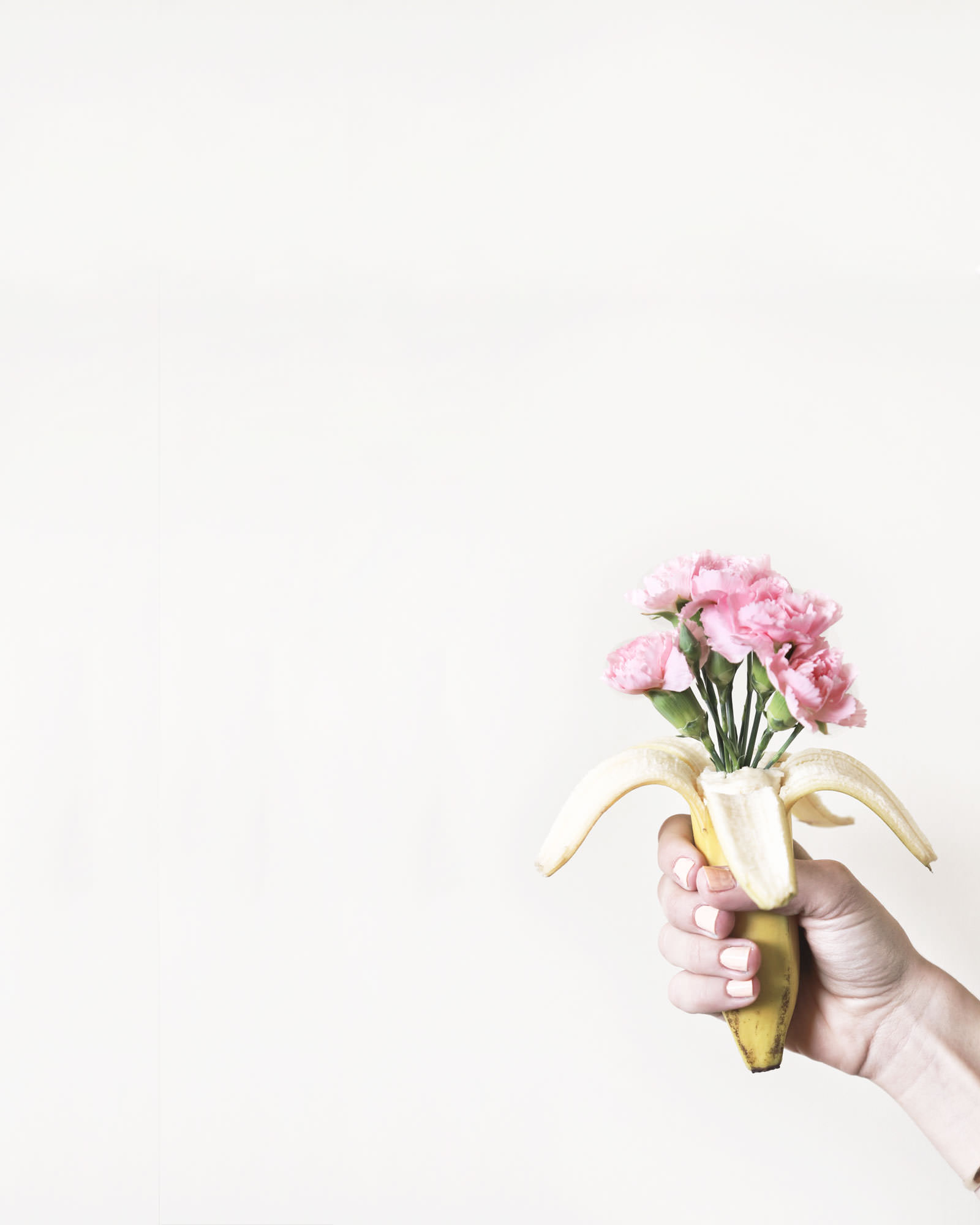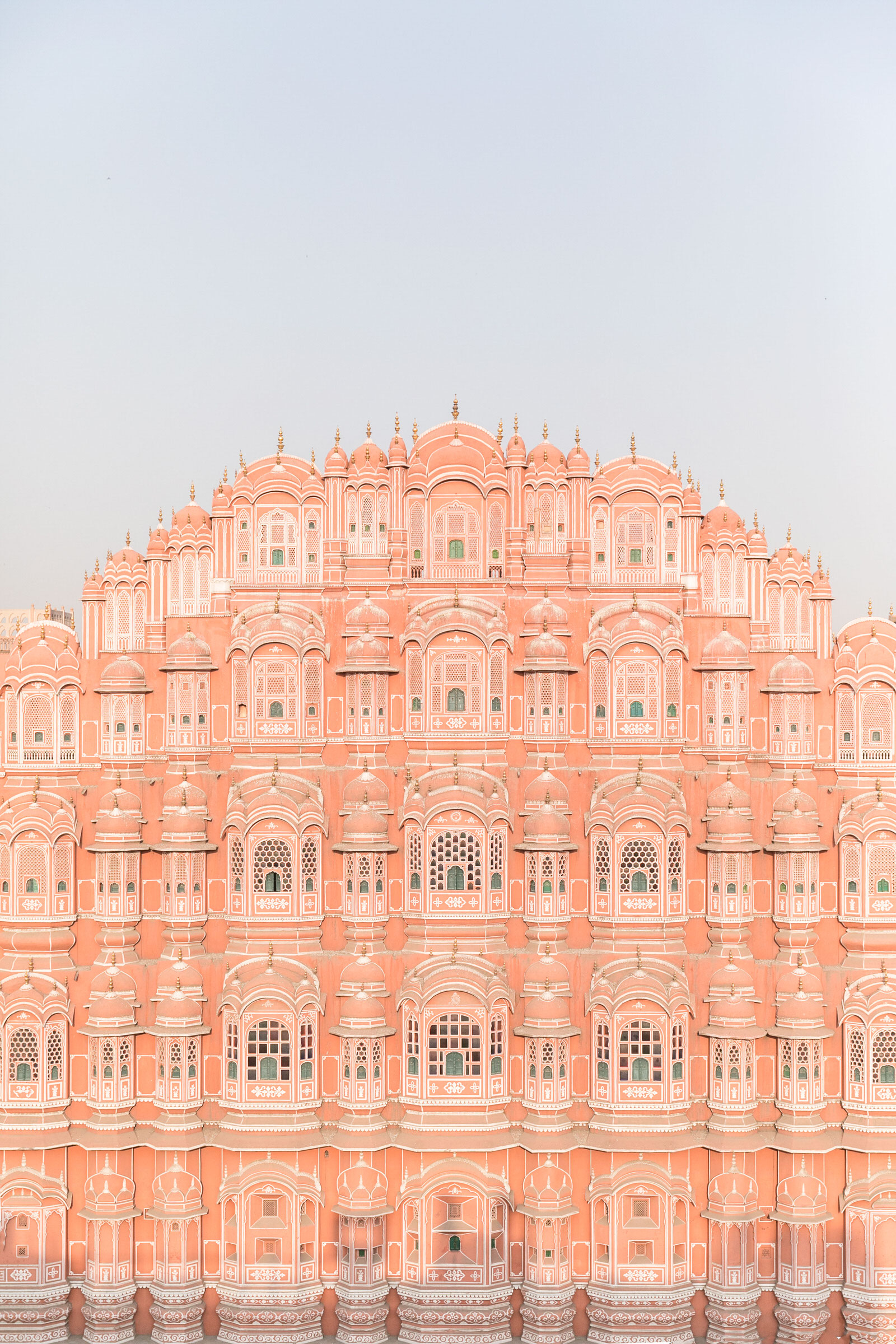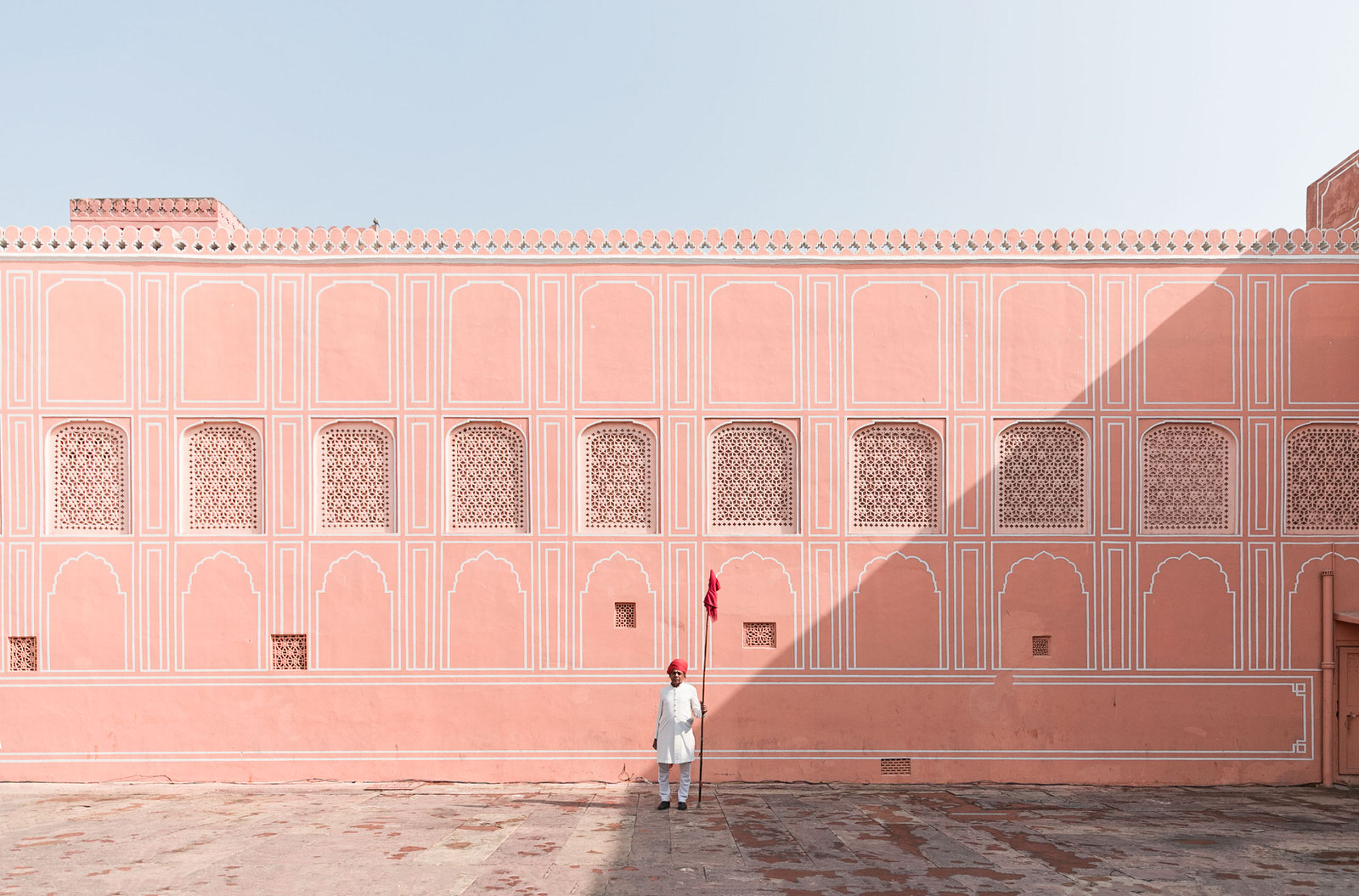
Photographing a Peaceful Pastel Planet with Maria Marie
Marioly Vazquez – Maria – grew up admiring her father’s talent for capturing moments with his camera, but didn’t believe she’d ever be able to make a living as an artist. After spending time living in Paris with a couple who worked in the film industry, however, she realized that having a good eye for detail might be worth something to the world, after all – and might help her change the way the world saw her homeland.
A native of Mexico, Maria learned through working abroad that people viewed her country as an unsafe place. “It’s more than that,” she would tell them, and began sending pictures of the landscape from her iPhone. As she photographed the scenes she found beautiful, she discovered she had a talent for picking out interesting colors, patterns, and textures in her surroundings.
Now, Maria does make her living as a professional photographer and stylist, collaborating with creatives and brands from around the world. We had the chance to discuss with her how she’s developed her own style, what it’s like to document her life, and what inspired her first book, Pastel Moods.
When did you first begin to consider yourself an artist?
When you have this creative bug, you always need to find different ways to do something creative. I started exploring photography and, to be honest, it was just as a hobby. But when Instagram launched, I started experimenting more with editing and photos, and I started to fall in love with the way you can tell visual stories to other people, how you can find beauty in the unexpected places. So, I decided to pursue photography much more professionally.
I was using Instagram not as a social media app, but mostly, I think, as a platform to show my photography, to show my work. I started meeting other creatives from all over the world, and I started to get much more engaged with photography. But then I got a scholarship to move to London to do a master’s degree in arts management because, in Mexico, I was working in a museum in a grant-making foundation – I was managing the arts, but never creating the arts.
I did my dissertation on communication and social media, and how the cultural and creative industries communicate and convey their message through social media platforms. While doing my master’s I was still doing photography and trying to travel as much as possible around Europe.
I was taking pictures, and I think since early on, I decided I wanted to show the beauty in the world because when I was back in Mexico, the news was really horrible, all the things that they would say about Mexico. I just wanted to show the nice side of Mexico, to create pictures that inspire people and show that life is not all bad, that there are many good things around there, and you can find beauty in the unexpected.
And I was trying to do the same when I was traveling, trying to find beauty in those places.
Your images have consistent bright, pastel colors and a light softness to them. How did you develop this signature style? What does this style express, for you?
I’ve always loved colors in any way, but I felt that pastel colors really spoke to me in the sense that what I wanted to show was really positive emotions – emotions of peace, serenity – and I thought pastel colors were the perfect way to convey that message in my photography.
I think it’s a process of experimenting – experiment, try different things until you find a style that feels right and comfortable. When you find the thing that you’re good at and it easily flows, I think that’s when you find your style.
Obviously, you should always challenge yourself and try to do different things, because it is very easy to sit in your comfort zone. I think my challenge, basically, was when I decided to move to London. Mexico is always sunny, always bright, so it’s quite easy to find those colors. But when I moved to London, it was quite a challenge.
It was hard at the beginning, I had to learn photography all over again. Because you grow comfortable in your style, in knowing the settings of your camera, the way to edit, and here in London, even the light temperature is different. It’s really cold, it’s always raining, and it was not the perfect setting for my kind of photos. So, I decided to experiment with studio lighting and shooting more indoors, trying to do something creative. But you still get this urge to create, so you just find ways to do something.
Your book continues to explore the idea of color and mood – what sparked your interest in this topic? How do you think it relates to photography?
Through color, I saw I was able to express different emotions. For example, normally, if you want to feel calm or relaxed, I will try to use different blue shades, or if I want to do something much more invigorating or, like, happy or summery, I would use yellow. So, it was about relying on color to show different emotions.
This book is an exploration of color throughout my photography. It is divided into different chapters, and each chapter explores a color, about how that color can make us feel. Obviously, there’s a difference between the hues on different colors and this book explores pastel hues, which give more serene emotions – calmer, peaceful emotions. This book has photos from Mexico, London, Japan, Myanmar, and Southeast Asia. The message is to learn how to see the world in pastel colors, and how you can find peace and serenity all over the world – as well as creating that peaceful spaces inside your home.
What artists or photographers do you most admire? And how has their work influenced your own?
That’s a really hard question. To be honest, I don’t have a favorite photographer or a photographer that I admire the most. As a photographer, not all of my inspiration comes from other photographers, but it comes from other art formats. If I had to choose a favourite photographer, it would be Vivian Maier. I love her work, especially her selfies. It’s really inspiring, all the work she’s created and how she found such interesting subjects. But what impresses me most is that she was doing this for herself. Her art wasn’t a pursuit of fame, but more of an urge to create and explore her creative side.
I also like Martin Parr has a really quirky kind of photography – ironic, humoristic photos of middle-class life.
But I think most of my inspiration comes through graphic design and illustration. I always wanted to be a graphic designer. Now I am, because I went back to school and just graduated. I think most of my photos have a lot of graphic design principles and elements – symmetry, balance, white space, and use of color.
Do you have any particular habits that are a part of how you begin your creative process?
I feel that art and spirituality are intertwined, in a way. So, I always try to meditate, to find a quiet space without music, without any intervention whatsoever, to really think about how this project feels, really feeling the emotion. And then I like to find a way to show that emotion.
With my type of photography, I always have to be looking at the weather – especially here in London. If it’s for a client, obviously, I need to think about finding the right props, finding the right set design, creating a mood board, and showing it to the client to see if that’s the kind of work they want to do.
But when it’s personal work, I like to improvise, as well. Or if I find an object that I find quite interesting, I’ll just keep it with me for a few days, have it near my desk and just try to find different ways to photograph that object.
What do you do when you hit a wall during your creative process?
It’s horrible. It happens to me when I’m doing styling for a client, and sometimes, I don’t get the image that I was picturing in your head. I just have to change the setting, change the setting again, move things around, until everything works well. Sometimes, I’ll just take a complete break, do something completely different, even go out for a coffee, then come back. This helps me to see the work with different eyes, and eventually make it work.
How do you know when an image is ‘done’?
For me, it’s when I have this consistency in color palette through my photography. That’s when I know the image is ready. Sometimes, it’s quite quick because the colors are already there. Sometimes, it takes much more time, much more editing, doing trial and error until I get the right color palette.
Your photography has a kind of diary-like quality to it – what do you enjoy about documenting your life with your camera?
I think it’s about storytelling. It’s about creating visual stories for my audience, and it’s a way to remember things for myself, as well. My work also tends to be my visual journal, that tell stories of a moment in my life – something that happened, things I was going through, places I’ve travelled, and capturing those moments in a way I want to remember them.
I feel that my pictures are a narrative of my life, of who I am. And I feel that each stage in my life can be reflected in my photography and in my work. So, I like to think that my photography evolves and grows with me as a person, too.
What book would you recommend any creative person read?
One book that I absolutely love is The Artist’s Way by Julia Cameron. It’s not just a book, but it’s more like a process to really unblock yourself creatively and to just be a little bit loose and do work as a form of play, to find enjoyment back in your work. It’s a 12-week course, and each week, you have different challenges you have to work on for yourself. And she talks about how creating whatever form of art you are making is almost like being connected with a higher power or God. This book helps you to connect back to that source that helps you create work.
What opportunities has your photography opened up that you hadn’t expected?
Through my photography, I’ve been able to travel to destinations that I never imagined I would be able to. Just recently, I was invited by the tourism board of Tbilisi in Georgia, to visit the city and to find pastel places there. It was quite exciting, because I’ve never been there and I’d never even heard of that place before, and I was able to discover a new place that wasn’t on my bucket list.
And in India, I got to meet the Maharaja, through a woman who followed me on Instagram. She loved my work, and when she saw I was in India, she told me, “You have to meet the Maharaja, because he would love to see your work and the photos that you’re posting of India.” He invited us to his palace, and it was so unexpected.
What are you focusing on right now, in your work and photography?
I just did graphic design school, so I would like to find a way to incorporate both of my passions, photography and graphic design. I’m also working on an online course that I will be giving about storytelling for Instagram – how to tell your own story, using Instagram as your tool.
Maria has gained international attention for the whimsical, playful style of her photography, enabling her to work with various brands and advertising agencies around the world. Her photography has been featured in blogs and magazines across the globe, and can also be found on her own website. To see more, follow her on Instagram, Facebook, or Twitter.
